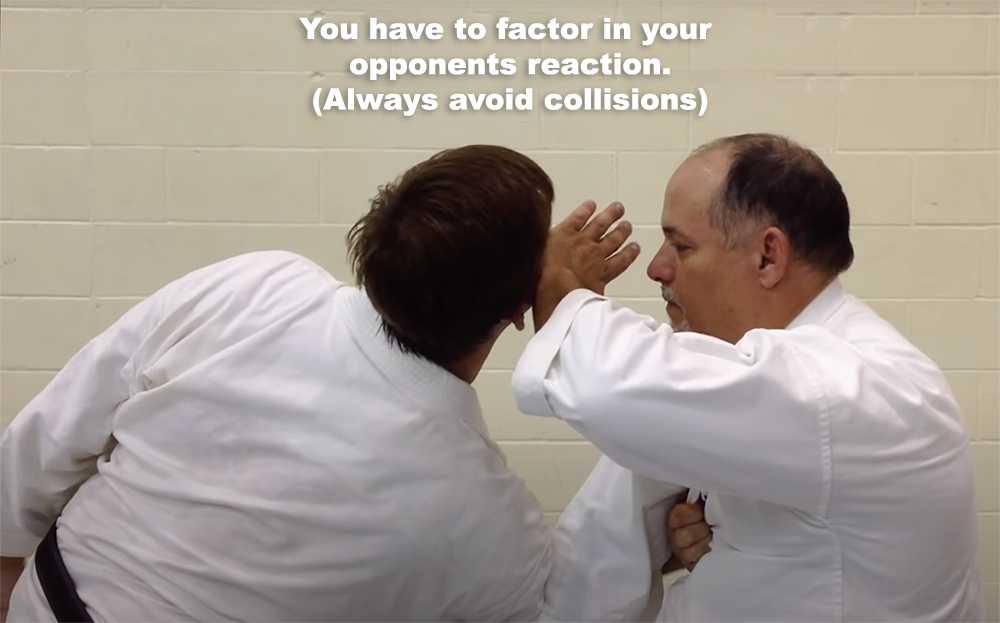
The martial arts require demonstration to supplement the whole teaching process. I get it. I demonstrate to my students. However, I always incorporate some level of failure into my demonstrations. Why? Because a real life attack is unpredictable, chaotic, vicious, and brutal. Your techniques will probably not go as planned and you may have to ‘reset’ from a failed attack and retake the initiative.
.
If it all goes wrong and you end up having to use your martial arts skills, perhaps for some reason you missed the pre-attack indicators, you mind is elsewhere, not truly focused, and you have headed into the abyss. The mere notion that you can actually anticipate *exactly* what attacks, and indeed any follow-ups, your attacker is going to do – in every possible scenario – and then easily defend yourself against those anticipated attacks, is very unlikely. You will be lucky if you even manage to defend against the first attack.
.
The success of any demonstrated technique is largely dependent upon having predetermined knowledge of the attack. Which is often unresisting, compliant, to result in a successful demonstration.
.
Nevertheless, you must take failure into account. So many times I have witnessed a successful exchange with no thought at all to what would happen if it all goes wrong. Presuming that your opponent will do a series of techniques that magically fit into your application, is crazy, because it is NOT going to happen.
.
However, we have what are called “known responses”, or “likely responses” is probably a better term. As an example, we know that if you hit someone, lets say, fully in the abdomen, there is a “likely” response from the opponent that we can realistically anticipate.
.
Therefore any bunkai demonstration or interpretation, you also have to factor in your opponents reaction. We have natural responses to being hit that might change a whole scenario if you don’t consider it.
.
There are other physical reactions too. The “flinch response”, or “startle response”, which is an autonomic (ie out of our conscious control) protective reaction, that we must always take into consideration when we try to figure out any application.
.
When things fall apart, you will be tested ‘big time’, you will learn quickly that you need to be able to adapt to failure and situations that just don’t go your way. Your attacker will respond in some way to your intervention, therefore you must demonstrate what will happen when they are suddenly not in the position they were in originally.
.
What’s important in my opinion, is the systematic approach you must follow in determining how these responses affect your application. Following a kata in its order, sticking to the solo representation exactly, and applying an application verbatim, is not correct interpretation, because you have to factor in your opponents reaction to your initial response[s], which may be different from the sequence of the solo representation of the kata that you want to apply.
.
You should base your actions not on what the opponent is going to do, but put the attacker into a position where they can not be a threat. Consider their reaction to your responses, consider failure, adapt accordingly….. and always avoid collisions.
.
.
![]() Photo Credit: With thanks to Angel Lemus 8th dan Zentokukai
Photo Credit: With thanks to Angel Lemus 8th dan Zentokukai
